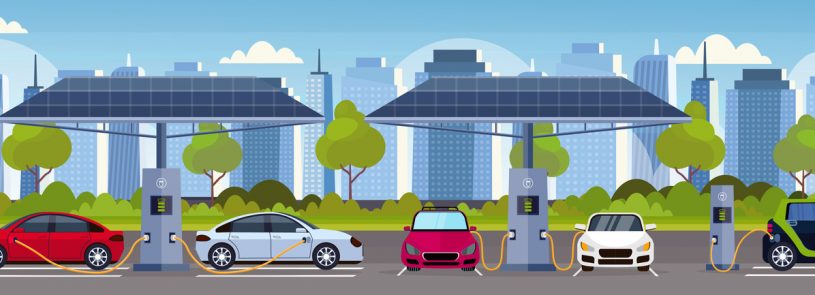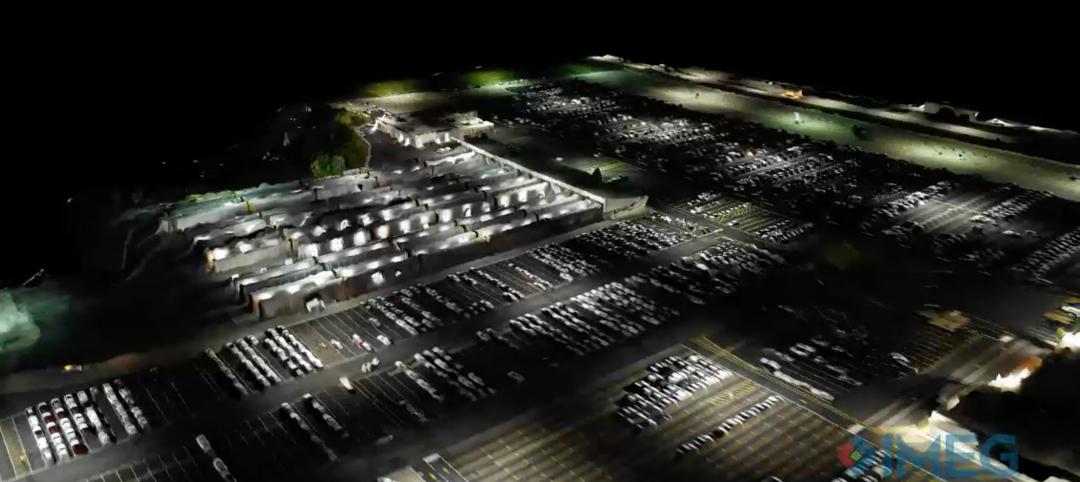There was a time, not long ago, when new car releases sparked conversations of muscle. As pop-culture interest changed, we started to use the buzzwords related to the efficiency of our vehicles. Today, we speak of range, all thanks to the new dawn of electric vehicles (EVs). The data speaks: EVs have not only become more accessible, but they have earned consumer trust. Sales are already projected to increase around 70 percent in 2021 alone and have pushed into almost every car body style. As the EV market share has been recognized, MEP firms have been tasked with the responsibility of an entirely new design: charging stations.
The implementation of any new technology requires intentional design, and best practice is to design with flexibility for continued innovation. Electric Vehicle Supply Equipment (EVSE) is no exception, and IMEG’s approach to designing facilities is one that considers current use, future expansion, and sustainable operation. We have already seen a diverse approach to facilitating EVSE, and one of the most promising characteristics is the ability to employ sustainable design. While many businesses, homes, and facilities have already opted for tying directly into the grid, this solution will have to be adapted as the volume of EVs expands. Renewable energy is a viable option to relieve the grid and earth, and solar energy (photovoltaic, or PV) sourcing has already proved to be an attractive solution for many clients. PV installation, maintenance, price, and performance are all attractive selling points for the technology, and surplus energy can be allocated to any load from the facility with proper planning. With PV and sufficient energy storage for overcast periods, the future of vehicles could quite literally be fueled by the sun.
Early adopters of public EVSE posed the issue of continued cost; their utility bills would not separate the building load vs. the charging load. This issue was amplified when utility companies claimed that the resale of their electricity was not permitted. With this in mind, even the most forward-thinking facility managers were hesitant to adopt any more than a couple charging stations. But we’re seeing solutions that are far beyond the beta phase. Providing EVSE is a service that can be charged by kilowatt-hour (kWh) via smart meters – now a common integration into EVSE. This rate can be dialed up and down by the owner to meet the supply and demand of their charging spots, which can help discourage people from squatting at a station for the duration of hours that it may take to fully charge their vehicle at peak time.
Another creative solution to providing more charging spots with less electrical draw is capping the rate of charge. Let’s say one charging “pump” can charge a vehicle in three hours and has two connection ports. But there are four EVs in the company and they operate on an eight-hour workday. Personnel would have to coordinate charging spot use and move cars throughout the day to charge all vehicles. The solution? Half the power output rate and double the connection points. This way, all four vehicles can be fully charged in a six-hour window.
As the technology advances, charging times will lessen and ranges will increase. This parallel in technology expansion will keep charging station congestion at bay as consumers are able to wait until they are home to fully charge their car overnight. In addition, bi-directional charging will soon allow a fully charged EV that is plugged in to discharge energy and act as a stand-in emergency generator and energy source for homes and the grid.
Solutions keep emerging, and they build on the previous technology so that a complete reinstall is rarely ever required. EVSEs are not petrol-gas station equivalents, they are network-run power reservoirs that can adapt to the users’ needs with simple software upgrades and creative configurations. Where there’s a will, there’s a way, and our engineers love to find them.
More from Author
IMEG Corp. | Jun 18, 2024
A healthcare simulation technology consultant can save time, money, and headaches
As the demand for skilled healthcare professionals continues to rise, healthcare simulation is playing an increasingly vital role in the skill development, compliance, and continuing education of the clinical workforce.
IMEG Corp. | Jan 11, 2024
Designing for personal technology is crucial for senior living facilities
Today’s seniors are increasingly tech savvy. It isn’t enough to give senior living residents a pre-determined bundle of technology and assume that they’ll be satisfied.
IMEG Corp. | Nov 10, 2023
3 important early considerations for office-to-residential conversions
Scott Campagna, PE, Senior Director of Housing, IMEG Corp, shares insights from experts on office-to-residential conversion issues that may be mitigated when dealt with early.
IMEG Corp. | Sep 28, 2023
Structural engineering solutions for office-to-residential conversion
IMEG's Edwin Dean, Joe Gulden, and Doug Sweeney, share seven key focuses for structural engineers when planning office-to-residential conversions.
IMEG Corp. | Jun 12, 2023
Drones take site assessments to new heights
Eric Vallejo, Director of Reality Capture and Geospatial Solutions, IMEG Corp., discusses strategies for using visualization and reality capture.
IMEG Corp. | Apr 20, 2023
13 trends, technologies, and strategies to expect in 2023
Biophilic design, microgrids, and decarbonization—these are three of the trends, technologies, and strategies IMEG’s market and service leaders believe are poised to have a growing impact on the built environment.
IMEG Corp. | Nov 16, 2022
SPC-4D: 7 reasons California hospital building owners should act now to meet seismic compliance
Seismic compliance with the applicable California building codes is onerous and disruptive for building owners, especially for a building in the heavily regulated sector of healthcare. Owners of older buildings that house acute care services have a big deadline on the horizon—Jan. 1, 2030, the cutoff date to upgrade their buildings to SPC-4D.
IMEG Corp. | Aug 1, 2022
Achieving a net-zero K-12 facility is a team effort
Designing a net-zero energy building is always a challenge, but renovating an existing school and applying for grants to make the project happen is another challenge entirely.
IMEG Corp. | Apr 19, 2022
6 trends to watch in healthcare design
As the healthcare landscape continues to evolve, IMEG’s healthcare leaders from across the country are seeing several emerging trends that are poised to have wide-ranging impacts on facility design and construction. Following are six of the trends and strategies they expect to become more commonplace in 2022 and the years to come.
IMEG Corp. | Feb 18, 2022
Crime Prevention Through Environmental Design: Comprehensive strategies to keep people and buildings safe
CPTED is so much more than surface-level protection; it encompasses multiple phases of design, social programs, colors, lighting, natural surveillance, natural access control, and even traffic curbing.
















